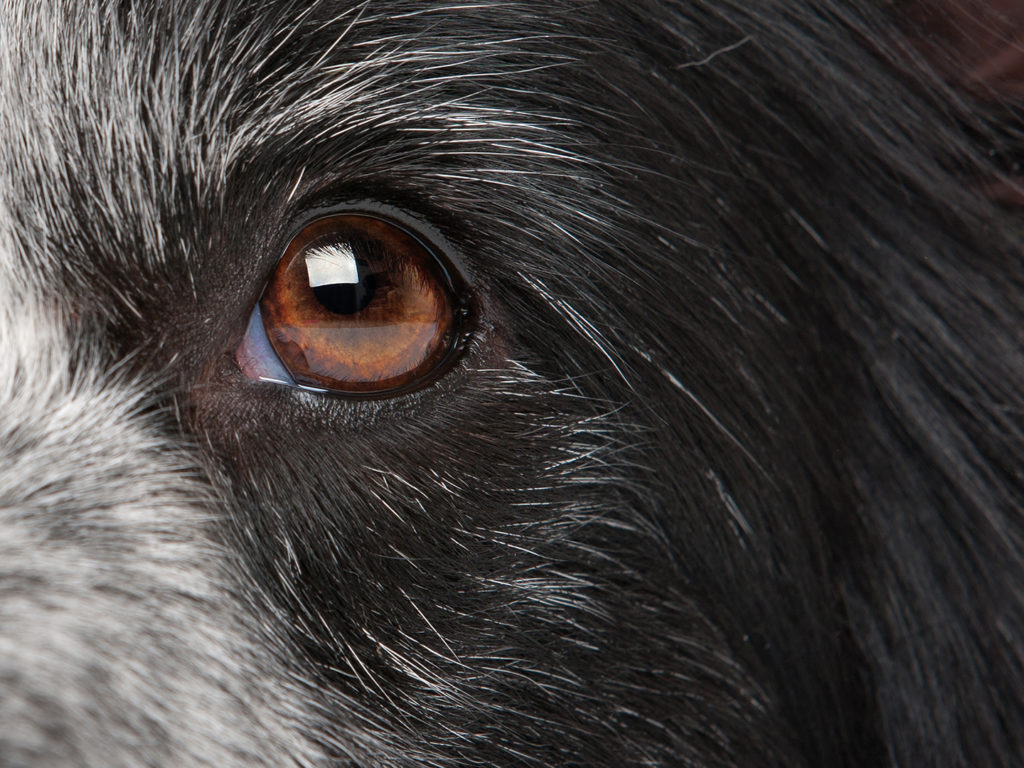Seeing The Bigger Picture: How Cataracts Affect Pets

Just as humans may develop vision loss or impairments, our animal friends also can experience issues such as cataracts as they age.
The term cataract refers to an opacity of the lens within the eye, causing both a discomfort and a loss of vision.
While all species are susceptible to developing cataracts, Dr. Lucien Vallone, a clinical professor at the Texas A&M College of Veterinary Medicine & Biomedical Sciences, says cataracts are most often found in dogs and horses and less frequently in cats.
The most common and noticeable sign of cataracts is a cloudy, white pupil. Other warning signs of vision loss can include running into walls, clumsier movement, and less spacial awareness.
Because the severity of pet cataracts ranges from a small inconvenience that causes little or no vision issues to affecting the entire lens and resulting in blindness, Vallone encourages pet owners to pursue evaluation with a veterinarian if there are any concerns of cataract or vision issues in their pet.
“It can be difficult to predict whether a small cataract will progress to a large one,” Vallone said. “Veterinary ophthalmologists generally recommend periodic eye exams to identify if a cataract is present and to then track progression.”
Cataract severity and treatment varies greatly from patient to patient. Some cases can be treated with topical therapies such as eyedrops. While this form of treatment will not reverse or repair damaged vision, it can ease any discomfort or inflammation caused by the cataract.
If cataracts progress too far, however, surgery can be done to restore lost vision in pets.
The majority of cataracts are consequences of inherited genetic mutations. While many of these mutations have been found in certain breeds of dogs, they are not necessarily present in the entire population. Vallone said it is tough to accurately pinpoint which breeds develop cataracts, due to the major variations within a breed around the globe.
Owners who acquire their dogs from breeders should ask the breeder if annual Orthopedic Foundation for Animals (OFA) exams have been performed within their breeding program.
“The OFA organizes breeding soundness examinations with ophthalmologists that are intended to help responsible breeders avoid breeding dogs affected by cataracts,” Vallone said. “If breeding soundness steps were not taken prior to adoption, or a dog was adopted from a shelter, the best strategy an owner can take is to schedule regular (annual) evaluations with their vet for screening purposes.”
A key element to pets living a full and happy life comes from their ability to clearly see both their owners and the world around them.
Although cataracts have the potential of putting a cloudy haze on an animal’s happy life, by staying observant to the well-being of their animal companions, pet owners can catch conditions like cataracts early so that their pet can be treated as soon as possible.
Pet Talk is a service of the School of Veterinary Medicine & Biomedical Sciences, Texas A&M University. Stories can be viewed on the web at vetmed.tamu.edu/news/pet-talk. Suggestions for future topics may be directed to vmbs-editor@tamu.edu.


